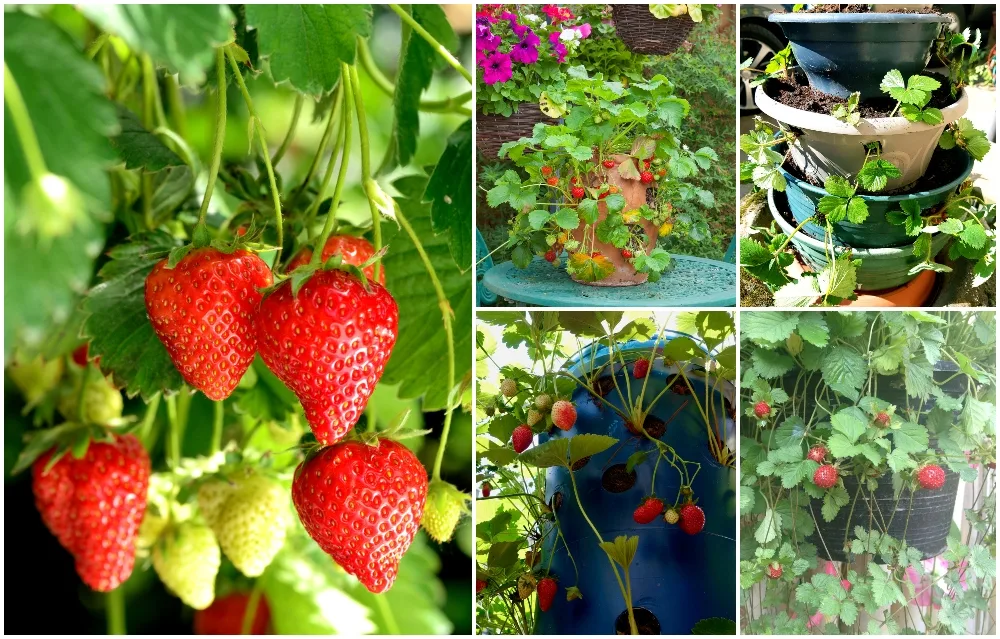We all have a favorite way to eat and cook these small red fruits. We enjoy them in pastries, with whipped cream or sugar and even alone to enjoy their sweet acidity! And the biggest fans who have a garden have found THE good thread: planting them at home. To successfully grow and cultivate strawberries in quantity in your vegetable garden or in pots on your balcony, we have a few secrets to share with you. So, how to plant strawberry plants without making a mistake? Once you’ve taken care of harvesting them carefully by following these gardening tips, you’ll have fun again!

Contents
- 1 1) Choose the right number of plants
- 2 2) Choose the right variety of strawberries to grow
- 3 3) Find the right place to plant strawberry plants
- 4 4) Planting strawberries is not done any old way
- 5 6) Don’t use just any fertilizer
- 6 7) Keep the birds away
- 7 8) Final tips for growing beautiful strawberries
- 8 Author
1) Choose the right number of plants
Dear gardener, it all depends on your use! If you don’t want to eat a lot of strawberries and pick them here and there, ten or so plants will be enough. If you also want to make jams or pies, aim for about 30 plants to get a sufficient harvest. In addition, plan for enough space to sow all this: 30 to 40 cm between each plant and 60 to 90 cm between each row. This may seem like a lot, but you’re sure to have beautiful strawberries and an abundant harvest.
2) Choose the right variety of strawberries to grow
You have to pay attention to this, as it affects the fruiting periods! There are many varieties, divided into two categories: remontant and non-remontant. Non-remontant varieties produce for a short period (about 4 weeks) in summer and are therefore suitable for vacations. Everbearers produce for years and over longer periods of time, extending into the fall… so they are more in demand.
As far as taste is concerned, the wild strawberry and the wild mara are very popular. They are also easy to grow as remontant varieties. The old varieties (capron royal, vicomtesse héricard de thury, louis-gauthier or madame moutot) are also very appreciated for their perfumed taste. On the current side, we find the ciflorette, the cirafine and the reine des vallées.
3) Find the right place to plant strawberry plants
In general, it is recommended to find a sunny and warm place to obtain sweeter strawberries. This will ensure a juicy and full-flavored strawberry! A semi-shaded area may also be suitable, but will offer you a little less yield than full sun.
4) Planting strawberries is not done any old way
The soil must be well worked before planting so that the roots can breathe and it must be enriched with a good humus or decomposed manure or pellets in the fall, before planting. Moreover (and this is very important), the plants develop from the collar which is just above the roots. The latter should never be buried in the soil. On the contrary, it must be well cleared at the time of transplanting or even just at the time of purchase of the clods in garden center. Finally, strawberries like rich and not too acidic soil (the ideal pH is between 5.5 and 6.5). If your soil is too acidic, rectify with a little lime.
5) Watering should never be neglected
To ensure that your seedlings survive the planting and have enough water for the first week, you can place the clumps in a basin filled with water or compost tea for 30 minutes. After that, watering should be regular, especially when it’s hot or the rain doesn’t come. If it is dry and hot, the shallow roots of your strawberries could quickly suffer… hence the importance of watering a little each day without drowning them. Also, avoid putting water on the fruit or it will rot. And if you can’t water, ask a friendly neighbor or a relative who will be compensated in fruit!
6) Don’t use just any fertilizer
Avoid nitrogen-rich fertilizers that will grow leaves rather than fruit! It is better to use a fertilizer rich in potassium to obtain a maximum of large fruits. Ideally, you should make homemade comfrey manure to show your plants lots of love while avoiding saturating the soil with unsavory chemicals!
7) Keep the birds away
Strawberries start out as flowers until a mini green strawberry timidly makes its appearance. This one will slowly but surely turn red, gorge itself with sugar and get bigger… and that’s exactly when your fruit will become prey for the greedy birds! At the first signs of reddening, the best thing to do is to use a protective net. You can also be clever and use shiny and mobile objects to keep the birds away: plastic bags, CDs… This way, they won’t get their paws caught in the net and risk getting trapped.
8) Final tips for growing beautiful strawberries
Don’t hesitate to remove diseased leaves or strawberries and mulch the soil with wood chips or ferns so that they don’t get damaged by contact with the wet soil. If some of the plants are no longer in top shape and are starting to tire, renew them by buying new ones or by transplanting the seedlings produced at the end of the runners. And if you don’t need new plants, remove the runners. Finally, the hardest tip: remove the first flowers from the plants before transplanting and during the first two weeks! While you may be anxious to eat your first strawberries, this will help you get more strawberries later, as the plant will focus its energy on its root system.

